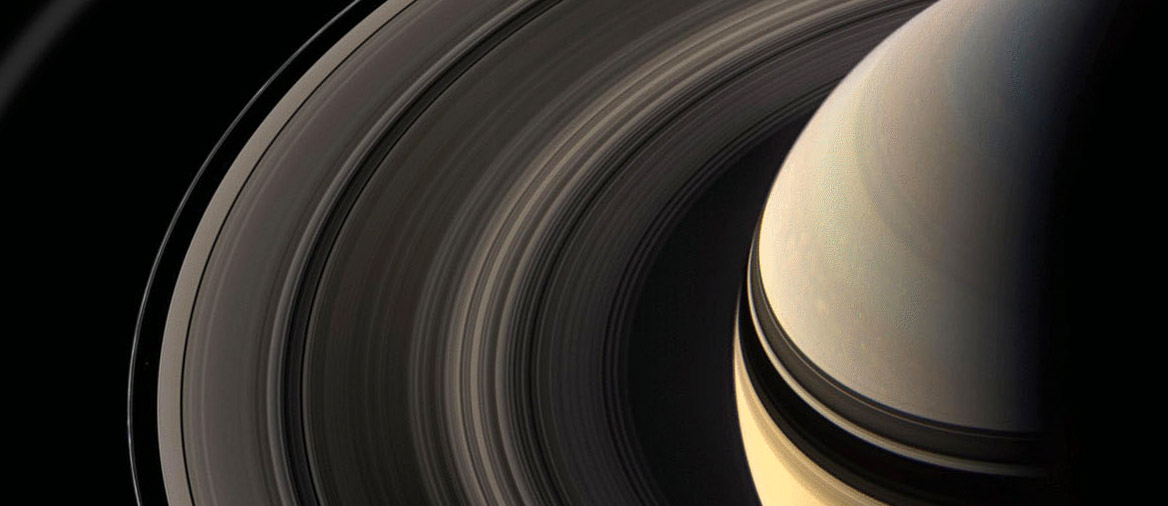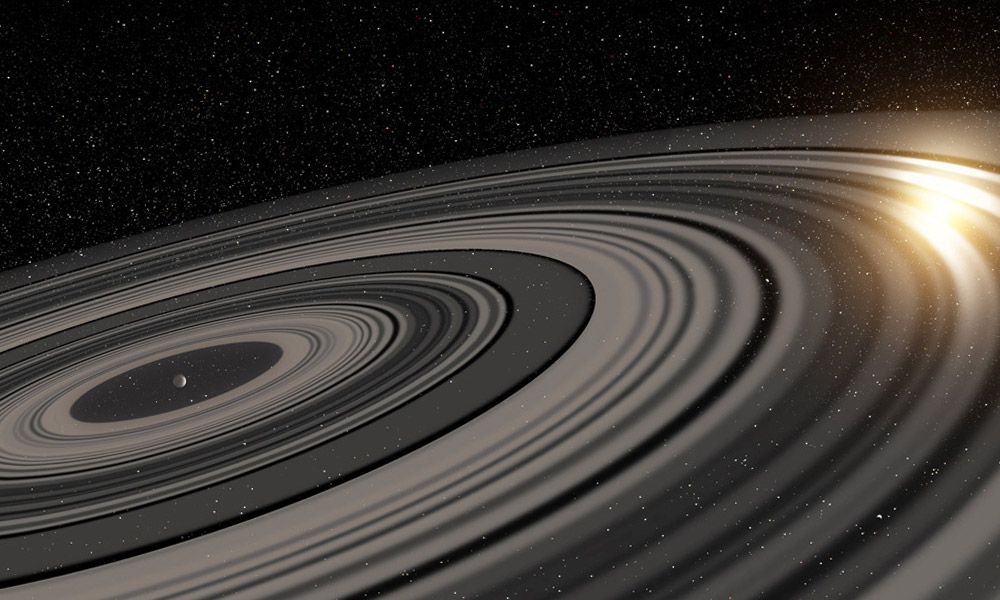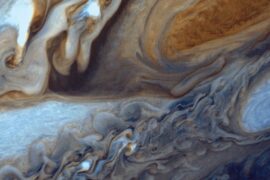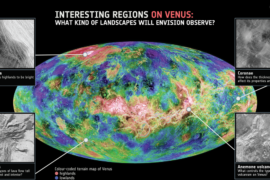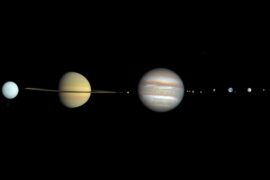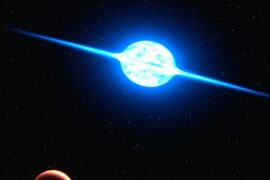Saturn is not the only planet with rings around it.
In fact, all the gas giants in the Solar system have formed rings. They are just much thinner and less dense than Saturn’s and therefore can’t be seen from earth.
The rings around Jupiter, for example, weren’t discovered until 1979 when the Voyager 1 space probe passed by the planet and sent close-up photos.
With our current telescope technology and the information later collected by other missions like the Galileo probe, we have been able to better understand how these rings were formed and their nature.
The gas giants in the Solar system – Jupiter, Saturn, Uranus, and Neptune – are also known as Jovian planets. The name is derived from the Roman name for Jupiter, Jove.
Why do Jovian planets have rings?
Jupiter, Saturn, Uranus, and Neptune share many similarities. They are made mostly out of gas, they each have many Moons, they have strong winds, they are extremely cold, and they all have rings around them.
Jovian planets have rings because when they formed, some leftover material was caught by its gravitational field but was too far away for it to be pulled and integrated with the rest of the planet.
At least that’s the most plausible theory that astronomers have. Part of the dust and rocks in the rings could have also been part of meteoroids or other bolides that were caught by the planet’s orbit.
The mass of these Jovian planets is huge. This makes their gravitational pull very strong. So the theory of a lot of objects being caught in their orbit makes sense. This is also the reason why these gas giants have more and bigger moons than the terrestrial planets like Earth.
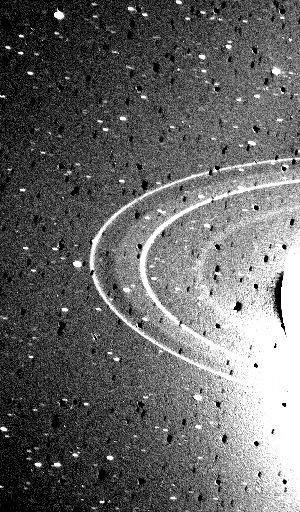
The image above is a photo taken by the Voyager 1 of Neptune. The brightness and contrast have been increased to emphasize the thin rings around the planet.
Why are Saturn’s rings bigger than the rest?
Even if the leftover material theory explains the rings around Jovian planets, the ones around Saturn are much denser in comparison.
One theory is that Saturn’s rings formed because two moons the planet had in its early days had their orbits altered – probably because an asteroid or some other object collided with one of them -. This moon would have crashed against the other, causing them both to break into millions of small pieces.
But wouldn’t those pieces eventually form another moon as they collided with each other? And why aren’t there any big chunks?
Excellent question!. The answer to that is that the rings are too close to the planet to form a moon. There’s a distance called the Roche limit that determines the point where moons can be formed. Inside this limit, the tidal forces caused by the planet’s gravity are stronger than the pieces’ gravity, preventing them from colliding with each other and breaking apart the pieces.
Why Do Jovian Planets Have Rings And Terrestrial Planets Don’t?
The inner planets of the Solar System – Mercury, Venus, Earth, and Mars – are also called terrestrial planets because they are rocky, like Earth. One of the main differences between them and Jovian planets is that these planets do not have rings around them.
The reason why terrestrial objects do not have rings is that they are too small. Their gravitational pull is much weaker than that of Jovian planets so they do not trap as much material in their orbits.
This is also part of the reason why terrestrial planets do not have as many moons (being closer to the Sun also plays a role). Mercury and Venus do not have moons, Earth has one, and Mars has two, while all the Jovian planets have more than 14 each.
Do All Gas Giant Planets Have Rings?
At the time of writing this article, there are more than 5,100 discovered exoplanets. Those are planets outside our Solar system. A good fraction of those are gas giants, and some of them are many times larger than Jupiter.
These planets are too far away to know with absolute certainty whether or not all of them have rings. but a few of them have even larger ring systems than Saturn.
We do not know if all gas giants have rings or not. The variables are too many, however, it is very likely that there is a tendency for these Jupiter-like planets to have them.
Summary
- Jovian planets have rings because their strong gravity captures a lot of objects
- Saturn’s rings might have been caused by the collision of two moons
- Ring systems seem to be a characteristic of gas giants
Enjoyed this article?
Get daily 10-minute PDFs about astronomy to read before bed!
Sign up for our upcoming micro-learning service where you will learn something new about space and beyond every day while winding down.

